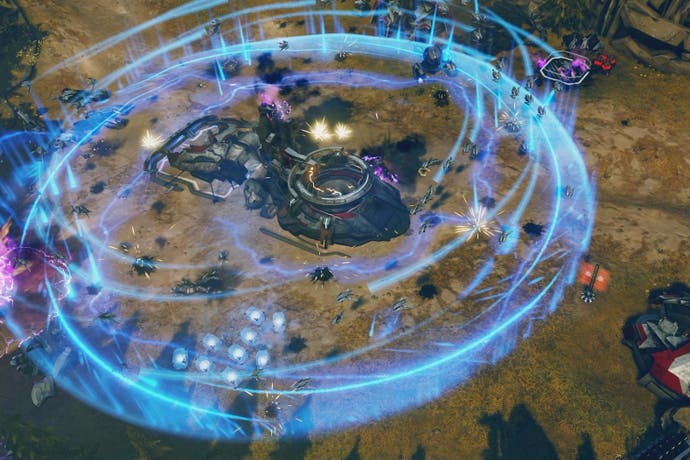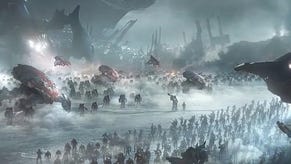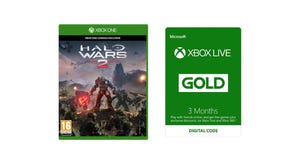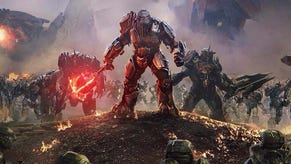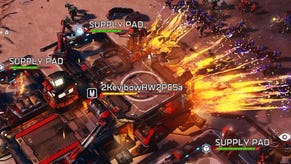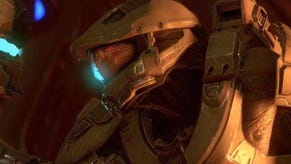Halo Wars 2 benefits from the experience of Creative Assembly
UNSC what they did there.
Creative Assembly is at its very core a PC strategy game developer. Here's a studio that enjoys words such as 'anti-aliasing' and 'mouse acceleration'. What, then are they doing with a real-time strategy franchise that can be played with a controller?
Well, for a start, they're making it better. Unlike its predecessor, Halo Wars 2 now lets you manually sort your units into control groups and quickly switch between them using the d-pad, providing the kind of micromanagement we've come to expect from an RTS. Creative Assembly has included that feature in its games for almost 20 years, but we rarely see it on console.
If you're playing with a mouse and keyboard it's still a more intuitive experience, as you jump between locations by clicking on the minimap, or drag a box to precisely select the units you want to control. Those are always going to be difficult actions to replicate with a gamepad and so Halo Wars 2 provides some clever alternatives. Holding down the left bumper, for example, makes your cursor move more quickly, which in turn lets you to traverse the map with some urgency. The original game got a lot right when it came to gamepad controls, but the added expertise of Creative Assembly is welcome.
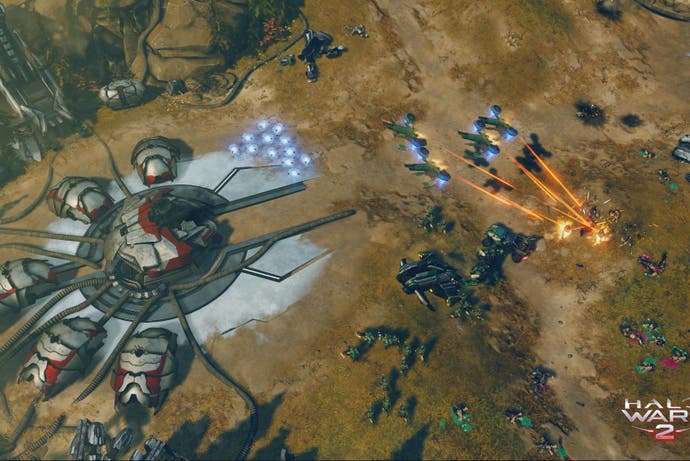
Outside of the control scheme, the team also had some thoughts on what kind of units an RTS game needs to feel well-balanced.
"We needed more artillery pieces," explained creative director Alistair Hope. "So we created the Kodiak and the Blisterback. Mechanically we needed units with a longer range that could own an area of territory, but there was nothing in the Halo universe that was appropriate. 343 supplied us with a lot of reference material from previous games and then we worked on something together that could fit this role."
Hope, it's worth noting, had previously directed Alien: Isolation, a game highly praised for its respect towards the source material.
"That's generally true of anything we do at Creative Assembly," said Hope. "Even if it's historical reality, there's always an attention to detail. That's no less the case with Halo Wars 2. With the Kodiak, we wanted to create a new unit, but we didn't want it to feel completely strange and new and different.
"One of the goals is to make it feel like it always existed and you just hadn't seen it. So it looks and feel like a UNSC vehicle. It's not shouting that it's new. It just sort of fits into place."

At a recent hands-on event, I spent most of my time with the game's campaign, replaying a new mission called Ascension. You start with a small force of UNSC troops, then you're tasked with capturing three separate control points positioned around the map, while holding off waves of enemies from the game's new faction, a Covenant splinter faction called the Banished.
It's an early mission and so it's perhaps unfair to expect a big, genre-defying setup, but as objectives go, this didn't feel all that different to the missions I played back in 2009. Just like the Kodiak, Halo Wars 2 wasn't shouting that it's new. The game looks sharper and there are a handful of quality of life changes that I really like, but so far, it feels like a continuation of the Halo Wars series rather than a significant evolution.
Perhaps we'll see more of that in the game's multiplayer, with new ideas like the card-based Blitz mode replacing traditional base management with deck building. That sounds different and interesting and may even counter one of the largest problems facing newer players in the RTS genre: this feeling that even before you start playing, you need to know everything, from build orders to rush tactics. But from what I've seen of the campaign so far, it's a little more of the same.
Want to see what I mean? Ah, go on then, here's a video. Full disclosure: I played through this twice before recording so you'd think I'm good at strategy games.
